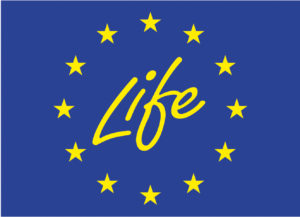The skills and knowledge acquired by the team will be put to good use when cinereous vultures are released into the Rhodope Mountains rewilding area in 2021.
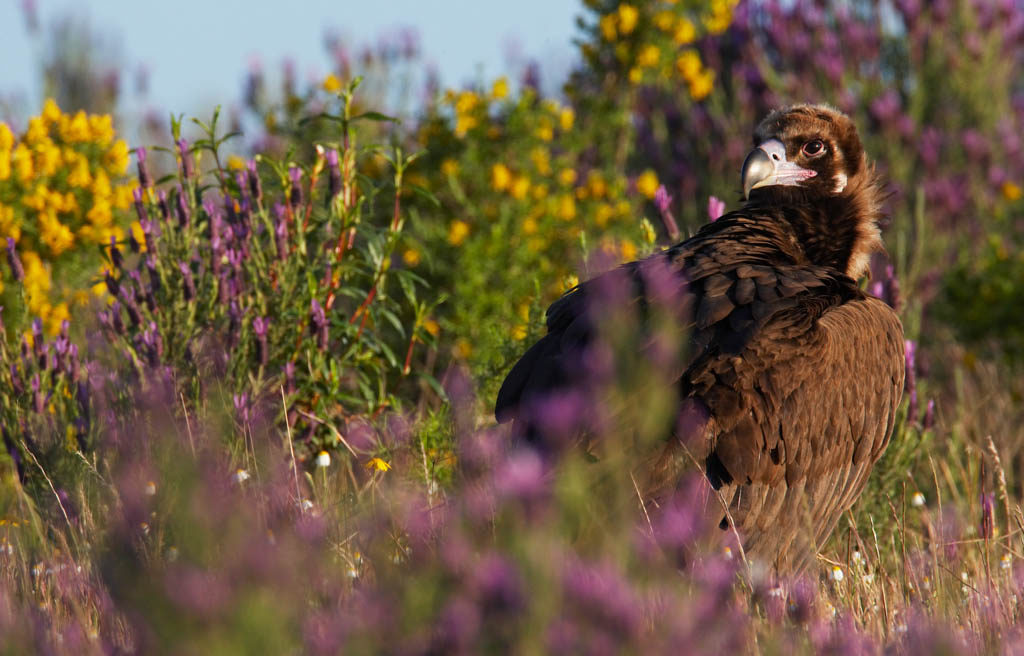
Part of the programme
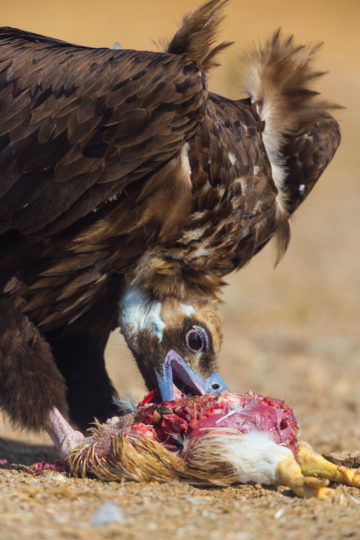
What kind of skills and knowledge does it take to reintroduce cinereous (black) vultures into the wild? Two members of the Rhodope Mountains rewilding team found out on a recent visit to Spain, in preparation for the reintroduction of the species into the Eastern Rhodope Mountains of Bulgaria in 2021. The pair visited the rehabilitation and breeding centre of Spanish NGO GREFA (Group for Native Fauna and Habitat Rehabilitation) in Мadrid, as well as a cinereous vulture release site in the La Demanda Mountains (Sierra de la Demanda) of central-northeastern Spain.
Overseen by the Rewilding Rhodopes team and local partner the Bulgarian Society for the Protection of Birds (BSPB), the reintroduction programme in the Eastern Rhodopes will last between five and seven years and involve multiple releases of cinereous vultures sourced from Spain. The establishment of a healthy and naturally growing breeding population of the birds on the Bulgarian side of the Bulgarian-Greek transboundary rewilding area will enhance wild nature by restoring local food chains.
As a keystone species which inhabited the Rhodope Mountains of Bulgaria before the impact of man, the cinereous vultures will join the populations of griffon and Egyptian vultures already living there. While there is a breeding colony of around 30 pairs of cinereous vultures located close to the rewilding area on the Greek side (in Dadia National Park), its limited size and population growth rate means natural recolonisation is unlikely.
Learning from the experts
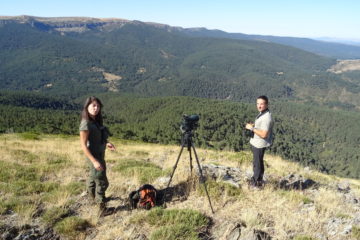
During their visit to the GREFA breeding and rehabilitation centre in Madrid, the two Rewilding Rhodopes team members learned about the Spanish NGO’s cinereous vulture captive breeding programme. This was followed by a field visit to the La Demanda Mountains, where a reintroduction site for the birds is located.
Highly experienced in the rehabilitation and reintroduction of raptor species in Spain, GREFA has been reintroducing cinereous vultures here since 2016, with 10 breeding pairs already established in the area.
Cinereous vultures are typically reintroduced through a delayed release process. This sees the birds spend seven to eight months in an aviary at the release site for acclimatisation purposes before they are released into the wild.
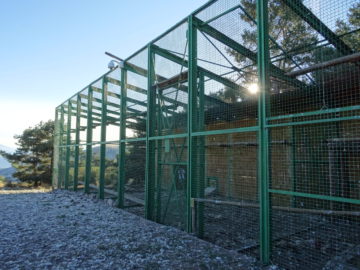
With 13 more vultures set to be released in the La Demanda Mountains in October, more than 20 artificial nesting platforms have been constructed close to the release site to encourage the birds to breed.
Vital expertise
The visit of the Rewilding Rhodopes team members to the La Demanda Mountains coincided with the marking of vultures kept in the acclimatisation aviary, which typically takes place a few weeks before their release.
The pair were able to witness the tagging of birds with transmitters, the bleaching of feathers to ease identification in the wild, and a veterinary examination. Vultures are very sensitive to human presence, so interaction with the birds is kept to a minimum, while the release site is deliberately located in a remote area.
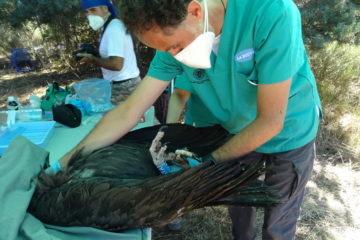
“The Rewilding Rhodopes team and the BSPB are extremely grateful to GREFA for their hospitality, professionalism and support,” says Dobromir Dobrev, a vulture expert attached to the team and BSPB conservation officer who took part in the visit. “We are now fully prepared and looking forward to the first cinereous vultures returning to the wild as a breeding species in the Eastern Rhodopes, 30 years after they disappeared.”
A returning species
Cinereous vultures were once common across the Balkan region, but factors such as poisoning, a lack of food and collisions with power lines mean they are now clinging on in Greece as a breeding species. The concentration of birds in the Dadia National Park colony increases the risk of extinction; establishing new satellite colonies will mitigate this risk and hopefully lead to further recolonisation in other parts of the Balkans and beyond.
Under the current LIFE Vultures initiative, which is working to support the recovery and further expansion of the griffon and cinereous vulture populations in the Bulgarian-Greek border area of the Rhodope Mountains, the Rhodope Mountains rewilding team has already conducted a specialised study to better understand the presence of cinereous vultures on the Bulgarian side of the Eastern Rhodopes.
 Representatives of GREFA have already identified potential release sites and also selected a site for the construction of a pre-release aviary. These activities were carried out with support from cosmetics retailer Lush, which has funded the preparatory stage of the reintroduction programme with a generous grant.
Representatives of GREFA have already identified potential release sites and also selected a site for the construction of a pre-release aviary. These activities were carried out with support from cosmetics retailer Lush, which has funded the preparatory stage of the reintroduction programme with a generous grant.
Want to know more?
- Rewilding Rhodopes
- LIFE Vultures
- Rhodope Mountains rewilding area
- Experience Bulgaria’s Rhodope Mountains with the European Safari Company

